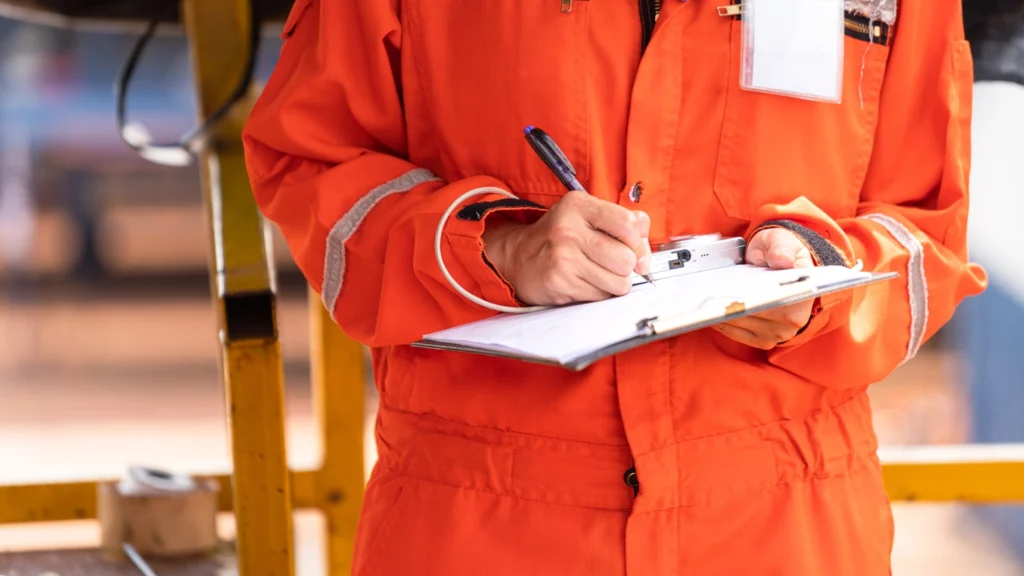A Phase I Environmental Site Assessment (ESA) is a fundamental step in protecting yourself and your investment during real estate transactions. At the heart of a Phase I ESA lies a comprehensive Phase I ESA checklist that guides environmental professionals in their methodical examination of a property. This article breaks down the essential elements of this checklist, ensuring you have a solid grasp of what a thorough Phase I ESA entails.

Key Elements of a Phase I ESA Checklist: Project Information
While seemingly straightforward, the project information section of a Phase I ESA report sets the foundation for the entire assessment. Here’s a breakdown of its key components and why they matter:
Property Details
- Beyond the Address: In addition to the street address, include a precise legal description of the property (parcel number, lot, etc.). This eliminates ambiguity and ensures the correct property is assessed.
- Size and Current Use: Document the size in acreage and the current land use (residential, commercial, industrial), as these factor into potential environmental concerns.
- Proposed Use: If the property will undergo changes in use (e.g., from agriculture to residential), this is key information, as it might trigger additional regulatory scrutiny.
Client Information
- Purpose Matters: State whether the ESA is for property purchase, refinancing, due diligence, or to fulfill specific regulatory requirements. Understanding the reason guides the focus and scope of the assessment.
Environmental Professional
- Credentials Count: List the names, certifications, and relevant experience of the individuals conducting the assessment. This establishes the credibility of their findings and helps ensure compliance with ASTM standards.
- Point of Contact: Include clear contact information for the lead environmental professional, enabling easy communication for follow-up questions or clarification.
A meticulously completed project information section ensures that all parties involved (buyers, sellers, lenders, regulatory agencies) are working from the same irrefutable baseline. It also adds a layer of professionalism and thoroughness to the report.

Historical Records Review
Imagine a Phase I ESA as a detective story, and the historical records review is your investigator digging into the archives. This crucial step aims to piece together the property’s past, potentially unearthing clues about environmental risks. Here’s what a comprehensive review entails:
Public Records: The Paper Trail
Environmental professionals scrutinize various sources including building permits, which can reveal prior uses of the site; zoning changes, which might indicate shifts in allowable activities; fire insurance maps, which may depict the locations of underground storage tanks or past industrial operations; and property tax records, which may hint at potential contamination through value discrepancies.
Regulatory Databases: Connecting the Dots
Checking federal, state, and local environmental databases is vital to identify any records of spills, hazardous waste violations, Superfund sites, brownfields, or known contamination in the vicinity. These databases provide insights into potential risks originating from nearby properties that may have migrated onto the site under investigation.
Historical Sources: Visualizing the Past
Analyzing aerial photographs from different time periods can reveal changes in land use, the presence or removal of structures, and potential areas of concern. Old maps and city directories provide additional context and may list past businesses that could have posed risks.
Going Beyond the Minimum
Experienced environmental professionals often consult additional resources to ensure a comprehensive assessment. Depending on the property and region, this might include historical society records, newspaper archives, or interviews with long-time residents.
Why Historical Research Is Critical
The historical records review casts a wide net, identifying past activities or incidents that might have contaminated the soil, groundwater, or building structures. While it doesn’t give definitive answers about current contamination, it pinpoints potential red flags that warrant further investigation. This information is essential for informed decision-making about the property, allowing you to negotiate accordingly or plan for a Phase II ESA if needed.
Site Reconnaissance
The site reconnaissance is where the Phase I ESA transitions from the realm of paperwork to a hands-on examination of the property. A trained environmental professional conducts a thorough visual inspection, systematically looking for potential signs of environmental concerns. Here’s what this process involves:
Exterior Inspection: Trained Eyes in Action
The exterior examination includes scrutinizing the grounds for evidence of hazardous material storage like drums, tanks, or containers. Stained soil, stressed vegetation, unusual odors, or waste disposal areas can raise red flags. Transformers are checked for potential PCB contamination, and surrounding properties are noted for potential impacts on the property in question.
Interior Inspection: Beyond the Surface
The building’s interior is examined for signs of improper chemical storage, spills, or the presence of potentially hazardous materials like asbestos, lead-based paint, and mold. Floor drains, sumps, and other hidden areas are inspected, as they can reveal historical contamination practices.
The Importance of Documentation
Photographs are an essential part of the reconnaissance phase. They provide clear visual documentation to support any findings within the final ESA report.
Beyond the Phase I ESA Checklist
Experienced environmental professionals don’t just follow a checklist. They use their intuition and knowledge of common contamination practices to identify potential issues that might not be explicitly listed.

Why Site Reconnaissance Matters
The site reconnaissance reveals the current state of the property and can corroborate or bring new questions to light regarding the information gleaned from the historical review. Even if no obvious contamination is observed, subtle clues might suggest further investigation is warranted. This on-the-ground assessment adds another valuable layer of information to protect your investment and guide informed decision-making.
Report Preparation
The culmination of the Phase I ESA is a meticulously compiled report that outlines all findings and offers clear recommendations. This report has the potential to significantly impact the property transaction, so attention to detail is paramount. Here’s what’s involved:
Findings: Meticulous Documentation
All information gathered throughout the investigation is rigorously documented. Any potential environmental hazards, formally referred to as Recognized Environmental Conditions (RECs), are prominently highlighted and clearly defined. Data gaps or limitations encountered during the assessment must also be acknowledged.
Conclusions: Beyond the Data
The report doesn’t just provide raw information; it offers expert analysis. Environmental professionals interpret the findings, summarizing potential environmental risks associated with the property. Based on the evidence, they provide specific recommendations. This might involve proceeding with the transaction, conducting a more intrusive Phase II ESA to confirm or rule out suspected contamination, or even walking away from the deal.
Certification: Assurance of Quality
To comply with ASTM standards and ensure its credibility, the Phase I ESA report must be signed and certified by a qualified environmental professional. This signifies that the assessment was conducted by experienced personnel, adhering to established industry guidelines.
The Power of the Report
A comprehensive and well-written Phase I ESA report is a powerful tool for all parties involved in a property transaction:
- Buyers: It provides clarity about potential environmental liabilities, empowering informed decision-making.
- Sellers: A clean Phase I ESA can attract potential buyers. Issues identified upfront allow for proactive remediation if necessary.
- Lenders: The report serves as a risk management tool, justifying their financial involvement in the project.
- Regulators: The Phase I ESA may become part of the property’s official record, demonstrating due diligence and potentially offering liability protection if future contamination is discovered.
The Importance of Clear Communication
A high-quality Phase I ESA goes beyond the checklist, presenting complex findings in a way that’s understandable to both laypersons and environmental experts. Using clear language, avoiding excessive jargon, and employing visual aids when necessary helps ensure the information is readily usable by all involved parties.
Phase I ESA: Your Investment Safeguard
A Phase I ESA is an investment, not just an expense. It’s a systematic process designed to uncover potential environmental risks that could transform your dream purchase into a financial nightmare. Understanding the value of this thorough assessment is key to making well-informed decisions, protecting your interests, and maximizing the long-term success of your real estate transactions.
Remember, choosing a qualified and experienced environmental professional is paramount. By prioritizing the due diligence of a Phase I ESA, you gain clarity, minimize future liabilities, and ensure that your investment is built on a solid environmental foundation.
Frequently Asked Questions About Phase I ESA Checklist
Can I use an outdated Phase I ESA report?
Generally, no. Phase I ESAs have time limitations for their validity, often 180 days, and sometimes even shorter depending on regulatory requirements. Outdated reports might not reflect recent changes to the property or updated environmental regulations.
Does a Phase I ESA include testing for things like mold or asbestos?
While a Phase I ESA includes a visual inspection for potentially hazardous materials, it doesn’t encompass intrusive sampling or laboratory testing. If asbestos, mold, or other specific concerns are suspected, additional specialized assessments should be conducted.
What if the property is in a rural area, do I still need a Phase I ESA?
Absolutely. Even rural properties can have hidden environmental liabilities. Past agricultural practices may have involved extensive pesticide or fertilizer use. Old dumpsites or abandoned structures might pose contamination risks.
My lender isn’t requiring a Phase I ESA. Should I get one anyway?
Highly recommended. Even without a mandate, a Phase I ESA gives you peace of mind. It can uncover issues that might impact your future use of the property or its potential resale value, giving you more leverage in negotiations.
Are there different types of Phase I ESAs?
Yes. While standard Phase I ESAs adhere to ASTM guidelines, they can be tailored for specific purposes or properties. For example, some assessments might focus in greater depth on the presence of wetlands or other ecological concerns. Your environmental consultant can guide you on the most appropriate assessment type.